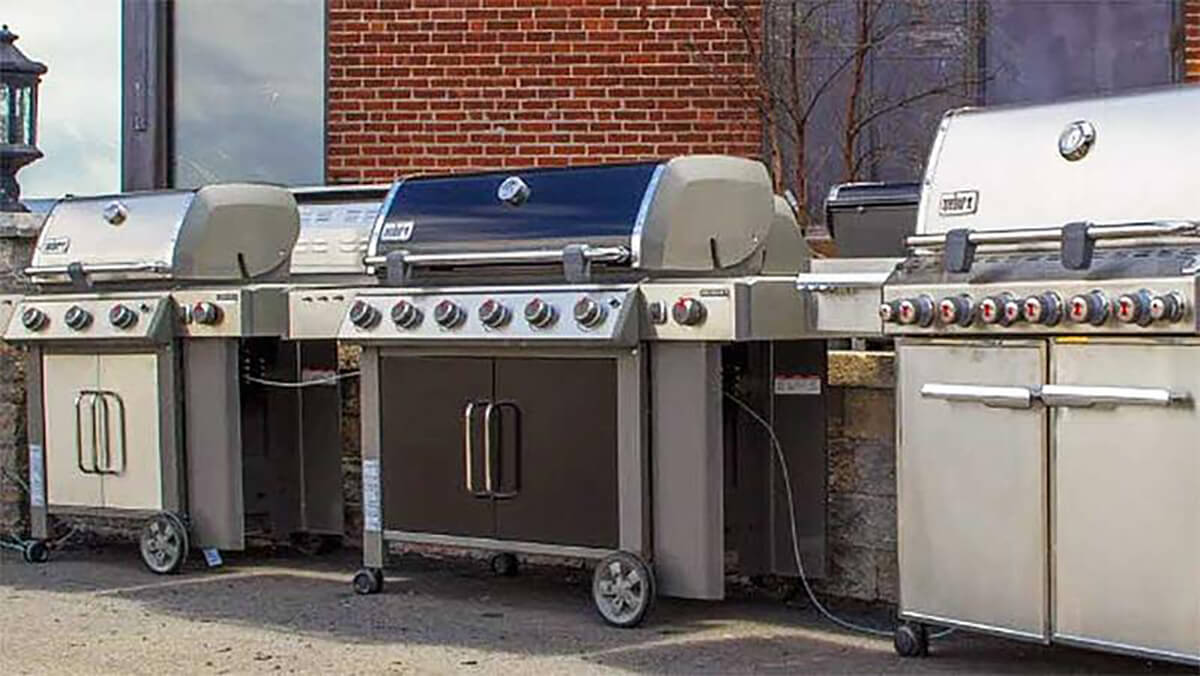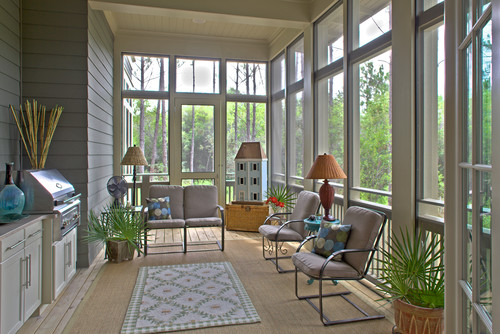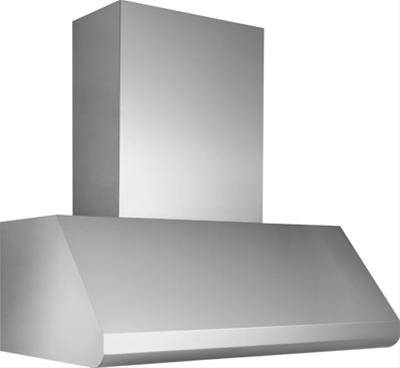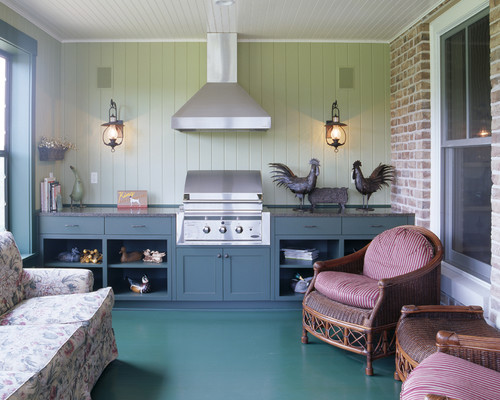March 12th, 2019 | 4 min. read
How to Vent an Outdoor Grill
Fortunately, you use the same principles as interior ventilation (I cover all this in the Ventilation Buying Guide). You have to consider capture area, CFM, and lastly proper ducting.
Before we discuss how to vent an outdoor grill, make sure you review these two essential steps:
- Consider placing the grill outside (I will repeat this statement a few more times).
- Check with your town's regulations for any code issues.
Capture Area
This customer's first issue was the shallow hood. When his client cooked, the smoke would bypass the hood and head into the room.
The hood always chambers a large volume of smoke and then the blower pushes the smoke to the outside.
A big blower and a shallow hood will not work.
So, the first step is to specify a deep hood of 27 inches or greater. Smoke from sausage or burnt meat will stay in the hood and not spill over into the room.
If there is some exposure to outside elements, you also need the hood to be outside rated. Outdoor rated hoods are all steel and will not rust. Best has two styles, but you should look at more commercial types.
|
Best Hood WPD38136 |
Best Hood WPD39M36 |
CFM
CFM (cubic feet per minute) is a measure of blower speed. This translates to how many cubes of air are exhausted per minute. For a grill enthusiast with a professional 36 or 48-inch grill, you should buy a big enough blower.
Best, a well-known hood manufacturer, produces a 1,500 CFM blower, which will still be underpowered. You should look at a commercial rooftop blower of 1800 CFM or more.
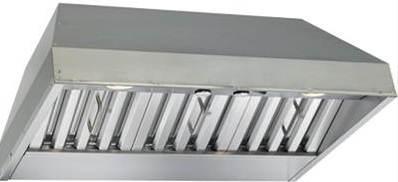
Ducting
The most efficient way to duct is straight up. Think about it. Smoke travels straight, so this way the blower is working most efficiently.
Many people will plan the vent as an afterthought with tons of bends and turns. Bending the vent reduces the flow of the smoke. So remember straight up, or if necessary, straight back.
Ducting specs have to be accurate as well. I have been on jobs using dryer duct for cooking applications. This will not work.
Dryer duct is 4 inch round pipe, but for exhausting cooking should be 6-10 inch round piping. For grills, it should be 10-14 inch round to handle that volume of smoke.
Grill Cover
That metal cover could also be a problem. You may want to remove it completely to avoid it projecting smoke to the outside.
Problems with Venting Grills
Grills singe and sear meats creating a ton of smoke. The average BTUs of better grills has increased as well up to 120,000 BTUs.
Together, heat and smoke create a problem for undersized hoods. Most of the time this is not an issue, because you open the grill when you are outside, and the smoke escapes into the atmosphere.
However, enclosing the grill and you have potential issues, especially in a three season porch or even in the house itself with a small pro grill.
Conclusion
Next time you grill, watch the amount of smoke.
If you love to grill and want an outdoor grill in your house, then plan your setup accordingly.
Specify a larger hood shell with adequate CFM and the right ducting. You do not want your house covered in smoke and grease.
Lastly, I still do not recommend this. People have complained from all over the country, because of poor installations.
Make sure this is adequately engineered. You should have a restaurant supplier devise a proper vent plan before you even think about it.
Good Luck.
Additional Resources
Get the Yale Ventilation Buying Guide with features, specs, and inside tips to properly vent any space. Well over 500,000 people have read a Yale Guide.
Related Articles:
- Best BBQ Grills for Boston
- How to Clean Your Gas BBQ Grill
- What is the Highest BTU/Most Powerful Professional BBQ Grill?
Why Should You Trust Us?
It seems that every appliance review has nothing but glowing comments about almost every product, yet you read customer reviews and they are almost universally bad.
We are here to fill in the disconnect. We'll give you the best features, and the drawbacks as well, including reliability based on over 37,000 calls performed by our service team just last year. Our goal is to give you ALL the information so you know what's right for you.
Please consider subscribing or adding to the conversation in the comments below. We appreciate you stopping by.
A Note About Pricing
Pricing on this blog is for reference only and may include time sensitive rebates. We make every attempt to provide accurate pricing at time of publishing. Please call the stores for most accurate price.
Topics:


